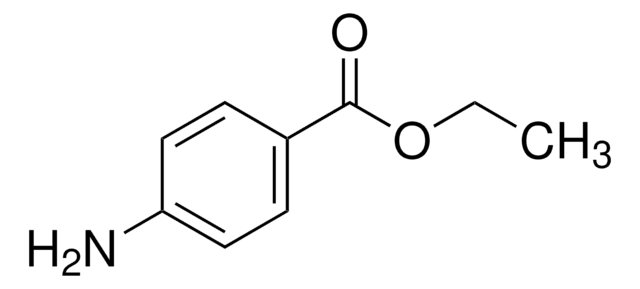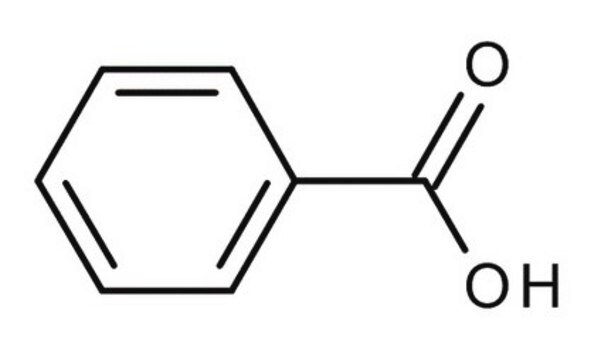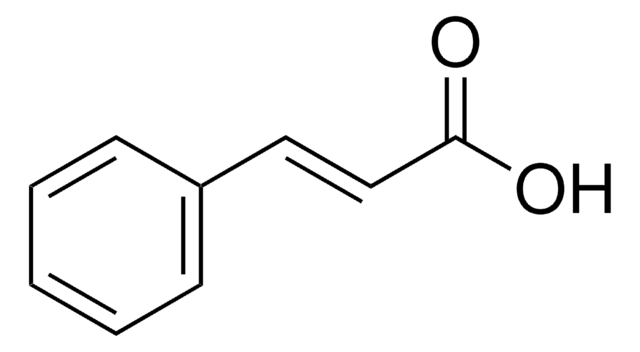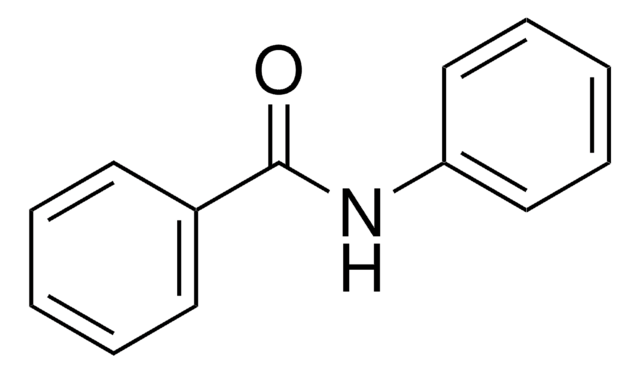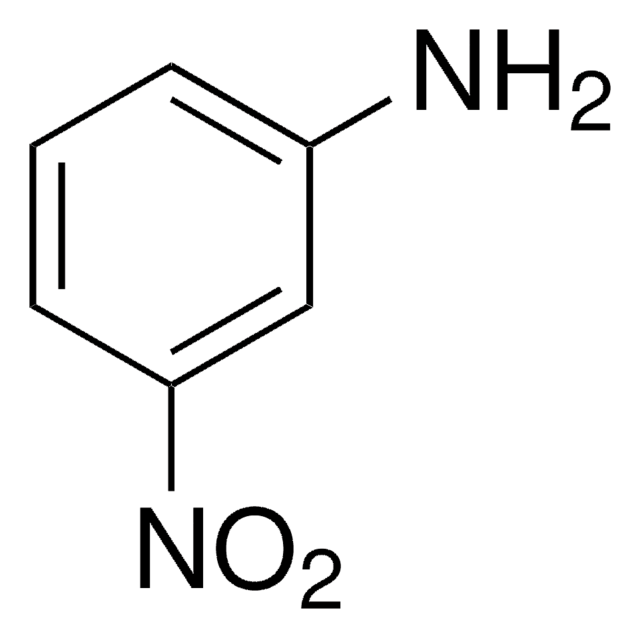242381
Benzoic acid
ACS reagent, ≥99.5%
Synonym(s):
Benzenecarboxylic acid, Carboxybenzene
About This Item
Recommended Products
grade
ACS reagent
Quality Level
vapor density
4.21 (vs air)
vapor pressure
10 mmHg ( 132 °C)
Assay
≥99.5%
form
crystalline
autoignition temp.
1061 °F
packaging
poly bottle of 25, 100, 500 g
poly drum of 3 kg
impurities
MnO4- reducers, passes test
≤0.002% S compounds
≤0.005% CH3OH insol.
ign. residue
≤0.005%
bp
249 °C (lit.)
mp
121-125 °C (lit.)
solubility
water: soluble (2.9 g/l at 25 °C)
anion traces
chloride (Cl-): ≤0.005%
cation traces
heavy metals (as Pb): ≤5 ppm
functional group
carboxylic acid
phenyl
SMILES string
OC(=O)c1ccccc1
InChI
1S/C7H6O2/c8-7(9)6-4-2-1-3-5-6/h1-5H,(H,8,9)
InChI key
WPYMKLBDIGXBTP-UHFFFAOYSA-N
Looking for similar products? Visit Product Comparison Guide
Related Categories
General description
Benzoic acid reacts with hydrogenating reagents to afford hexahydrobenzoic acid. The thermal decomposition of the product in the presence of lime or alkali produces benzene and carbon dioxide.
Application
It may be employed as an intermediate in the synthesis of the following:
- paints
- pigments
- varnish
- wetting agents
- aroma compounds
- benzoyl chloride
- benzotrichloride
Signal Word
Danger
Hazard Statements
Precautionary Statements
Hazard Classifications
Eye Dam. 1 - Skin Irrit. 2 - STOT RE 1 Inhalation
Target Organs
Lungs
Storage Class Code
6.1C - Combustible acute toxic Cat.3 / toxic compounds or compounds which causing chronic effects
WGK
WGK 1
Flash Point(F)
Not applicable
Flash Point(C)
Not applicable
Choose from one of the most recent versions:
Already Own This Product?
Find documentation for the products that you have recently purchased in the Document Library.
Customers Also Viewed
Protocols
Separation of 4-Hydroxybenzoic acid; Acetylsalicylic acid; Benzoic acid; Salicylic acid; Ethyl 4-hydroxybenzoate
Our team of scientists has experience in all areas of research including Life Science, Material Science, Chemical Synthesis, Chromatography, Analytical and many others.
Contact Technical Service
![1-Chloromethyl-4-fluoro-1,4-diazoniabicyclo[2.2.2]octane bis(tetrafluoroborate) >95% in F+ active](/deepweb/assets/sigmaaldrich/product/structures/206/487/53d52ee5-ef71-4e9a-9bc8-938b68b98d5d/640/53d52ee5-ef71-4e9a-9bc8-938b68b98d5d.png)
